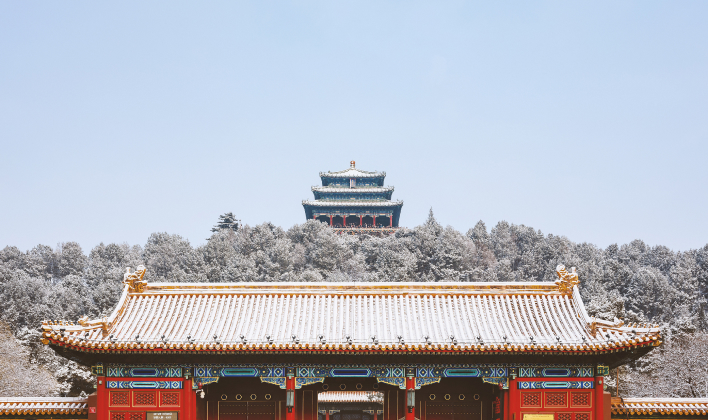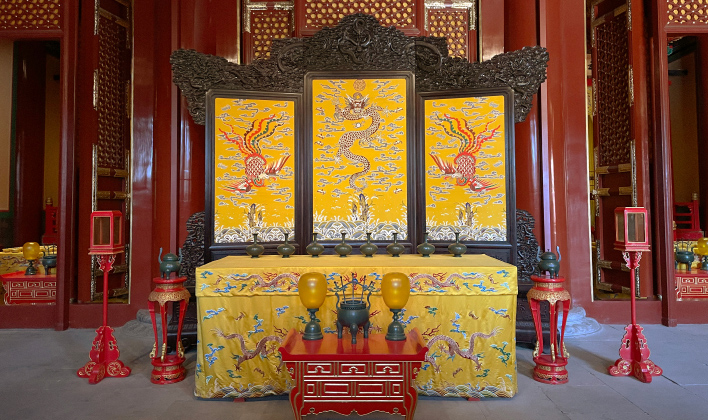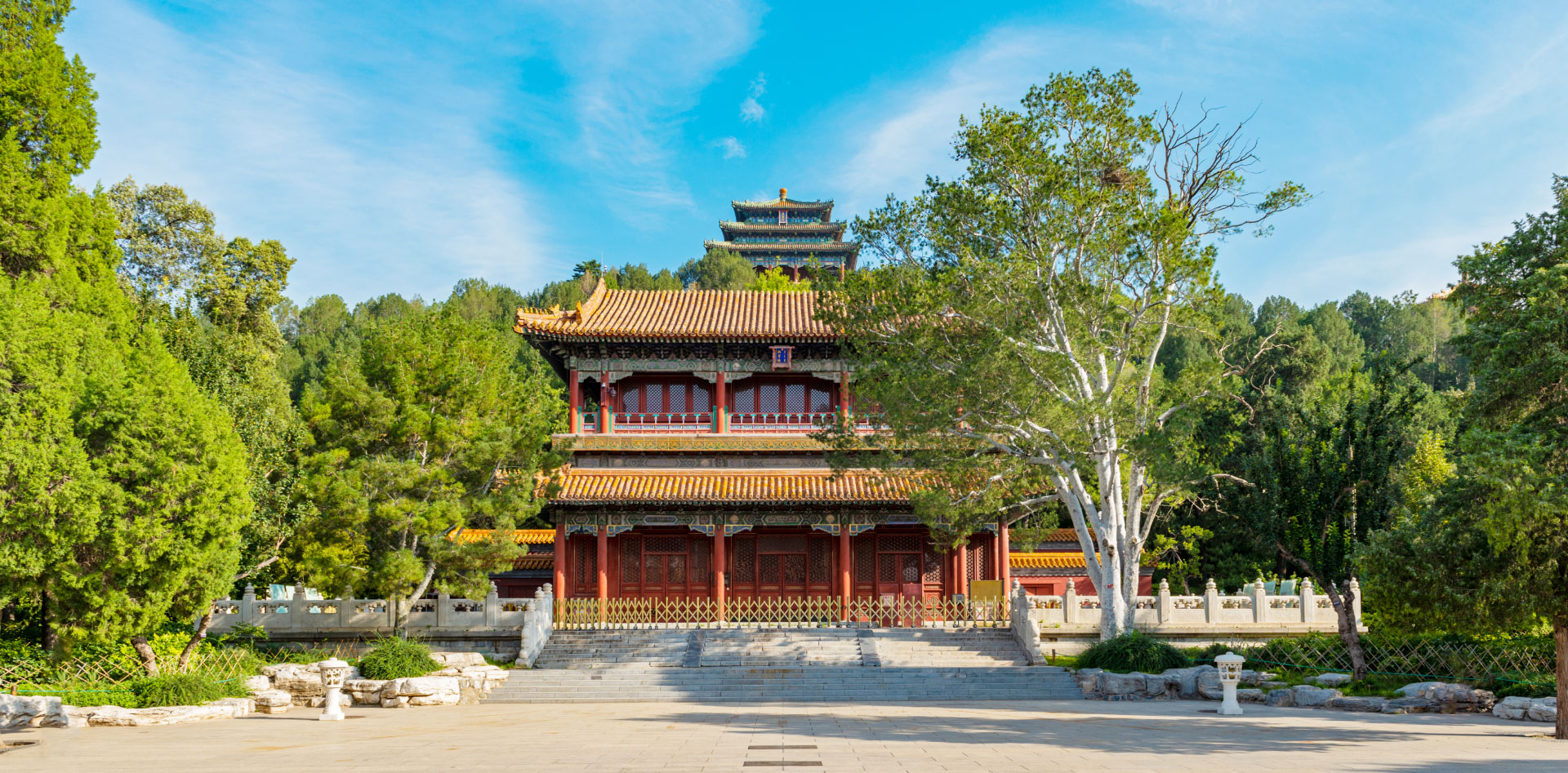The Jingshan Hill was an imperial garden located to the north of the palace city. Its north-south relationship with the Forbidden City shows the planning pattern of imperial palaces and gardens since the Wei and Jin dynasties. The general layout of the Jingshan Hill presents it as a regular rectangle surrounded by court yard walls. It is divided into the northern and southern parts. Dominating the southern part is the artificial hill, the highest point of the imperial capital of the Ming and Qing dynasties overlooking the Forbidden City in the south and the Bell and Drum Towers in the north. A building complex of five pavilions on the hill ridge lies symmetrically on both sides of the Axis. On the hill's south end, the South Gate and Qiwang Belvedere stand on the Axis. To the north of the hill, in the northern portion of the site, stands the building complex of the Hall of Imperial Longevity. On the east side are the Yongsi Hall Complex, the Guande Hall Complex, and the Guandi Temple Complex. The Jixiang Belvedere stands in the northeast corner; while the Xingqing Belvedere stands on the northwest corner. Both are laid out symmetrically on either side of the Axis.
The Jingshan Hill is the tallest point and a key skyline node on Beijing Central Axis. Its position and relationship to the north of the Forbidden City demonstrate the planning concept of Chinese palaces and gardens. Its towering hill, picturesque garden, and ornate buildings enrich the architectural sequence of the Axis. With its unique garden landscape, the Jingshan Hill has dual functions for both sacrificial rituals and the artificially created mountain setting providing a high elevation from which to look out over the city. It testifies to the imperial ceremonial and ritual traditions carried out in the Qing dynasty.







The building complex of the Jingshan Hill is built on a central axis. Sequentially, from south to north, the buildings include the South Gate of the Jingshan Hill, the Qiwang Belvedere, the Wanchun Pavilion, Archways of the Hall of Imperial Longevity, Glazed South Gate, the Gate of Imperial Longevity, and the Hall of Imperial Longevity. The Wanchun Pavilion is centrally aligned and overlooks the surrounding pavilion structures, which descend to the east and west. On the east side of the hill are the Guanmiao and Zhoushang Pavilions, and on the west side are the Jifang and Fulan Pavilions. The Hall of Imperial Longevity Complex is at the core of the northern part of the Jiangshan Hill. The West, East, and South Archways of the Hall of Imperial Longevity in the south of the building complex and the Glazed South Gate embrace an initial ritual space for ceremonial activities, creating a stately and solemn atmosphere. Together with the architectural structures flanking them and 1,025 old and valuable trees, they form a well-proportioned and symmetrical landscape in a picturesque setting.

The positional relationship between the Jingshan Hill and the Forbidden City shows the inheritance of the planning pattern of ancient Chinese imperial palaces and gardens. The Jingshan Hill as an imperial garden also had functions such as hosting recreational activities, being a place for planting flowers and fruits, and for raising auspicious animals. The emperors of the Ming dynasty followed a custom of climbing the Jingshan Hill on the Double Ninth Festival. In the Qing Dynasty, the layout of the Jingshan Hill was transformed. The Hall of Imperial Longevity was relocated onto the Axis for worshiping the portraits of the imperial ancestors, five pavilions were added on the hill's ridge for resting and overlooking, where Buddhist statues were enshrined. These transformations of the layout not only enhanced its ceremonial and sacrificial functions but also enriched the architectural space and sequence of Beijing Central Axis. Today, the Jingshan Hill is open to the public as a park.
The Jingshan Hill stands on the site of the residential quarters in the palace city of Dadu of the Yuan dynasty. When the palace city was constructed between 1406 and 1420, the Jingshan Hill was artificially constructed from the heaped ruins of the former imperial palace. In 1749, the Hall of Imperial Longevity was relocated onto the central axis from the northeast of the Jingshan Hill. In 1751, five pavilions were added on the hill's ridge. In the same year, the Qiwang Belvedere was added to the building complex on the south of the hill. The Jingshan Hill was opened to the public in 1928. It was reopened as Jingshan Park in1955.

The Hall of Imperial Longevity at the Jingshan Hill was the place where portraits of imperial ancestors were worshipped in the Qing dynasty.

The Five Pavilions was where royal family members ascended the hill and enjoyed the cool air during the Qing dynasty.

The Qiwang Belvedere was built on the south of the hill for worshiping the tablet of Confucius.




















